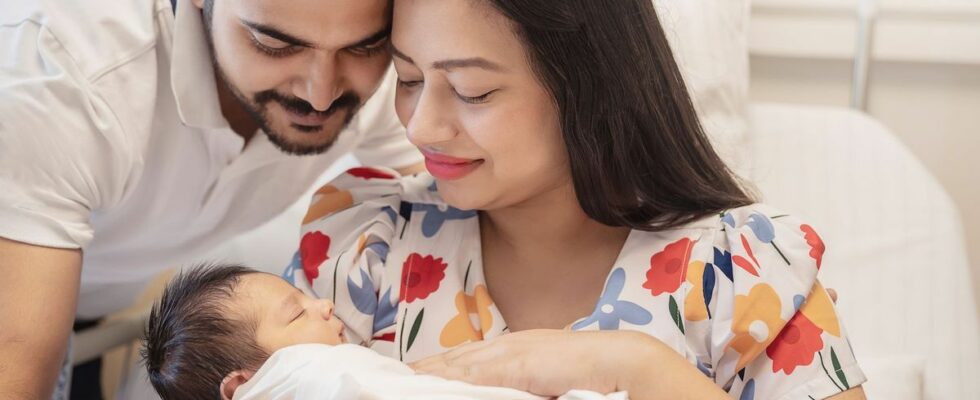Published on
Updated
Reading 2 min.
Marie Lanen
Head of parenting sections (baby, pregnancy, family), psychology and beauty

Announced by the President of the Republic, Emmanuel Macron, last January, the new birth leave could replace the current parental leave, from August 2025. Doctissimo explains to you what it will look like.
On Wednesday, May 15, the government launched a major consultation on the future birth leave which should replace the current parental leave. The outlines of this new system will be discussed with the various social partners. Doctissimo reveals what could change for future parents from 2025.
Three months for mothers, three months for fathers
The Minister of Families Sarah El Haïry brought together employers, unions, elected officials and family associations last Wednesday to discuss the new “birth leave”. According to the wishes of the President of the Republic, it should last “three months for mothers, three months for fathers, cumulative during the child’s first year. If it is intended to replace the current parental leave, maternity and paternity leave will remain unchanged (16 weeks for the 1st and 2nd children, 26 weeks from the 3rd for mothers and 25 calendar days for fathers). “This measure responds to several priorities: reconciliation between parenthood and professional life, future of the Social Security system in a context of historic decline in the birth rate, improvement of gender equality“, a Medef spokesperson told AFP.
NO to diets, YES to WW!
Here too the Government would move in the direction of priorities: “compensated up to 50% of salary up to the Social Security ceiling” according to the wishes of the Head of State, i.e. 1,900 euros. An important change when we know that the current parental leave gives the right to a monthly package of 448 euros in the event of a complete interruption of one’s professional activity. Moreover , the figures speak for themselves: only 14% of mothers and barely 1% of fathers use it. A lack of attractiveness which also plays a role in the current birth rate. not unanimously, “lThe short duration of this new birth leave, its too low compensation were repeatedly highlighted by the participants” can we read in the columns of Europe 1.
And yet, the Government is banking on this reform to boost the birth rate which has fallen. Moreover, the Minister of Families insists on the fact that this new birth leave is “an investment for the country, for the birth rate and for full employment”, and to add “couples would like on average to have between two and three children, but they have between one and two: we must help the French to live their life”.

